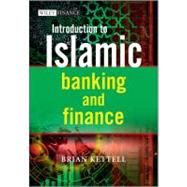
What is included with this book?
About the Author.
1 Muslim Beliefs.
1.1 Five Pillars of Faith.
1.2 Six Islamic Creeds.
1.3 Belief in Allah and His Attributes.
1.4 Belief in Destiny.
1.5 Belief in Angels.
1.6 Belief in Apostles.
1.7 Belief in the Revealed Books.
1.8 Belief in the Hereafter.
2 Sharia'a Law and Sharia'a Boards: Roles, Responsibility and Membership.
2.1 Definition of the Sharia'a.
2.2 Allah is the Law Giver.
2.3 Objectives of the Sharia'a.
2.4 Sources of the Sharia'a.
2.5 Sharia'a Islamic Investment Principles.
2.6 Conditions for Investment in Shares.
2.7 Sharia'a Supervisory Board (SSB).
2.8 Sharia'a Board Scholar Qualifications.
2.9 State Bank of Pakistan (SBP): Proper Criteria for Appointment of Sharia'a Advisors.
3 Definition of Islamic Banking.
3.1 Conventional Bankers and Islamic Banking.
3.2 Six Key Islamic Banking Principles.
3.3 Definition of Asymmetric Information.
3.4 Origins of Asymmetric Risk within Islamic Banking.
3.5 Riba in the Qur'an and Sunnah or Hadith.
3.6 Five Reasons for the Prohibition of Riba.
4 Murabaha as a Mode of Islamic Finance.
4.1 Murabaha Transactions.
4.2 What Makes Murabaha Sharia'a Compliant?
4.3 Islam Treats Money and Commodities Differently.
4.4 Murabaha and the Sharia'a.
4.5 Practicalities of Implementing Murabaha.
4.6 Sharia'a Rules Concerning Murabaha.
4.7 Reasoning Behind Sharia'a Rules.
4.8 Practical Examples of the Application of Murabaha.
4.9 Key Issues Associated with Murabaha.
4.10 Comparison of Murabaha with Interest-Based Finance.
4.11 Murabaha Differences from the other Islamic Financing Techniques.
4.12 Summary.
Reference.
5 Mudaraba as a Mode of Islamic Finance.
5.1 Definition of Mudaraba.
5.2 What makes Mudaraba Sharia’a Compliant?
5.3 Practicalities of Implementing Mudaraba.
5.4 Sharia'a Rules Concerning Mudaraba.
5.5 Practical Examples of Mudaraba.
5.6 Key Issues Associated with Mudaraba.
5.7 Comparison of Mudaraba with the Conventional Banking Equivalent.
5.8 Mudaraba: Differences from the other Islamic Financing Techniques.
5.9 Summary.
Reference.
6 Musharaka as a Mode of Islamic Finance.
6.1 Definition of Musharaka.
6.2 What makes Musharaka Sharia'a Compliant?
6.3 Practicalities of Implementing Musharaka.
6.4 Sharia'a Rules Concerning Musharaka.
6.5 Practical Examples of Musharaka.
6.6 Problems Associated with Musharaka.
6.7 Comparison of Musharaka with the Conventional Banking Equivalent.
6.8 Summary.
Reference.
7 Ijara as a Mode of Islamic Finance.
7.1 Definition of Ijara.
7.2 What makes Ijara Sharia'a Compliant?
7.3 Practicalities of Implementing Ijara.
7.4 Sharia'a Rules Concerning Ijara.
7.5 Basic Rules of Islamic Leasing.
7.6 Practical Examples of Ijara.
7.7 Key Differences between an Ijara Contract and a Conventional Lease.
7.8 Comparison of Ijara with the Conventional Banking Equivalent.
7.9 Ijara: Differences from the other Islamic Financing Techniques.
7.10 Summary.
Reference.
8 Istisna'a as a Mode of Islamic Finance.
8.1 Definition of Istisna'a.
8.2 What makes Istisna’a Sharia'a Compliant?
8.3 Practicalities of Implementing Istisna'a.
8.4 Sharia'a Rules Concerning Istisna'a.
8.5 Practical Examples of Istisna'a.
8.6 Key Issues Associated with Istisna'a.
8.7 Comparison of Istisna'a with the Conventional Banking Equivalent.
8.8 Istisna'a: Differences from the other Islamic Financing Techniques.
8.9 Summary.
Reference.
9 Salam as a Mode of Islamic Finance.
9.1 Definition of Salam.
9.2 What makes Salam Sharia'a Compliant?
9.3 Practicalities of Implementing Salam.
9.4 Sharia'a Rules Concerning Salam.
9.5 Sharia'a Rules Concerning Parallel Salam.
9.6 Practical Examples of Salam.
9.7 Benefits of the Salam Contract.
9.8 Problems Associated with Salam.
9.9 Comparison of Salam with the Conventional Banking Equivalent.
9.10 Salam: Differences from the other Islamic Financing Techniques.
9.11 Summary.
Reference.
10 Takaful: Islamic Insurance.
10.1 Case for Islamic Insurance.
10.2 Islamic Issues with Conventional Insurance.
10.3 Definition and Concept of Takaful.
10.4 Islamic Origins of Takaful.
10.5 Where Insurance Fits within Islam.
10.6 Definition of the Parties to a Takaful.
10.7 Takaful in Practice.
10.8 Takaful and Conventional Insurance.
10.9 Alternative Models of Takaful.
10.10 Sharia'a Law as Applied by Takaful Operators.
10.11 Takaful Operators.
10.12 Definition of ReTakaful (Reinsurance).
10.13 Retakaful.
10.14 Role of the Sharia'a Board in Takaful.
Appendix 1. Comparative Features of Islamic Financing Techniques.
A.1 Nature of the Financing.
A.2 Role of the Finance Provider in the Management/Use of Funds.
A.3 Risk Bearing by the Finance Provider.
A.4 Uncertainty of the Rate of Return on Capital for the Finance Provider.
A.5 Cost of Capital for the Finance User.
A.6 Relationship Between the Cost of Capital and the Rate of Return on Capital.
Appendix 2. Top 500 Islamic Institutions 1–73.
Glossary.
Bibliography.
Index.
The New copy of this book will include any supplemental materials advertised. Please check the title of the book to determine if it should include any access cards, study guides, lab manuals, CDs, etc.
The Used, Rental and eBook copies of this book are not guaranteed to include any supplemental materials. Typically, only the book itself is included. This is true even if the title states it includes any access cards, study guides, lab manuals, CDs, etc.